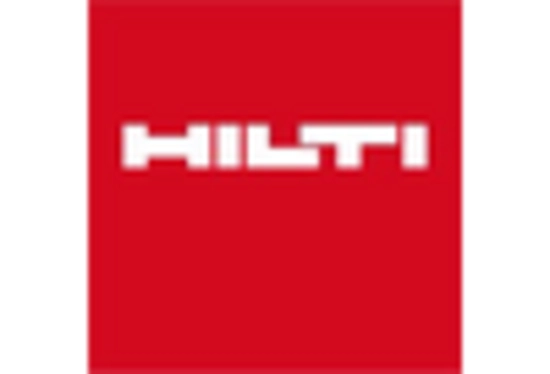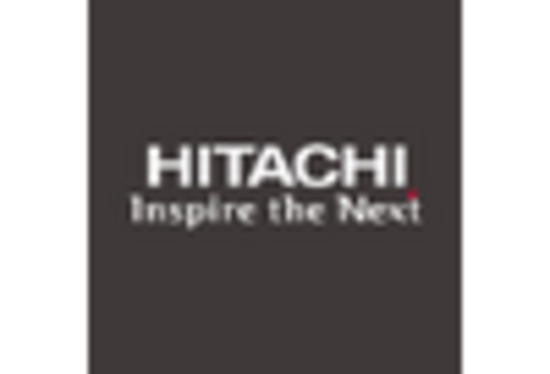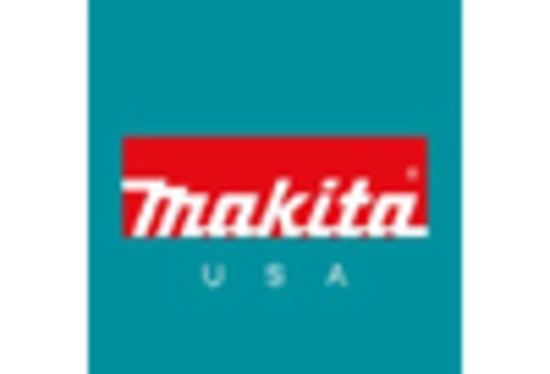Growing DIY Culture
The Rotary Hammer Drill Market is witnessing a surge in demand driven by the growing DIY culture among consumers. As more individuals engage in home improvement projects, the need for versatile and powerful tools has escalated. Recent surveys indicate that a significant percentage of homeowners are investing in tools to undertake renovations and repairs themselves. This trend is particularly pronounced among millennials and younger generations, who are more inclined to embrace DIY projects. Consequently, manufacturers are responding by offering rotary hammer drills that are user-friendly and designed for a broader audience. This shift not only enhances market penetration but also fosters a competitive landscape where innovation and affordability are key.
Rising Construction Activities
The Rotary Hammer Drill Market is significantly influenced by the rising construction activities across various sectors. With urbanization and infrastructure development on the rise, there is an increasing demand for efficient and powerful tools. According to recent data, the construction sector is projected to grow at a compound annual growth rate of approximately 5% over the next few years. This growth is likely to spur demand for rotary hammer drills, which are essential for heavy-duty applications such as drilling into concrete and masonry. As construction companies seek to improve productivity and reduce project timelines, the adoption of advanced rotary hammer drills is expected to increase, thereby propelling market expansion.
Expansion of E-commerce Platforms
The Rotary Hammer Drill Market is benefiting from the expansion of e-commerce platforms, which are revolutionizing the way consumers purchase tools. With the rise of online shopping, consumers now have access to a wider range of rotary hammer drills than ever before. E-commerce platforms provide detailed product information, customer reviews, and competitive pricing, making it easier for buyers to make informed decisions. This shift towards online retail is particularly advantageous for niche products, as it allows manufacturers to reach a broader audience without the constraints of traditional retail channels. As e-commerce continues to grow, it is expected to play a pivotal role in shaping the purchasing behavior of consumers in the rotary hammer drill market.
Increased Focus on Safety Standards
The Rotary Hammer Drill Market is also shaped by an increased focus on safety standards within the construction and manufacturing sectors. Regulatory bodies are implementing stricter safety guidelines to protect workers from potential hazards associated with power tools. As a result, manufacturers are compelled to enhance the safety features of rotary hammer drills, such as anti-vibration technology and improved grip designs. This emphasis on safety not only protects users but also boosts the market appeal of rotary hammer drills that meet or exceed these standards. Consequently, tools that prioritize safety are likely to gain traction among both professional contractors and DIY enthusiasts, further driving market growth.
Technological Advancements in Rotary Hammer Drill Market
The Rotary Hammer Drill Market is experiencing a notable transformation due to rapid technological advancements. Innovations such as brushless motors and improved battery technologies are enhancing the efficiency and performance of rotary hammer drills. These advancements not only increase the power-to-weight ratio but also extend the operational life of the tools. Furthermore, the integration of smart technologies, including IoT capabilities, allows for real-time monitoring and diagnostics, which can lead to improved maintenance and reduced downtime. As a result, manufacturers are increasingly focusing on developing high-performance rotary hammer drills that cater to both professional and DIY users. This trend is expected to drive market growth, as consumers seek tools that offer enhanced functionality and reliability.


















Leave a Comment